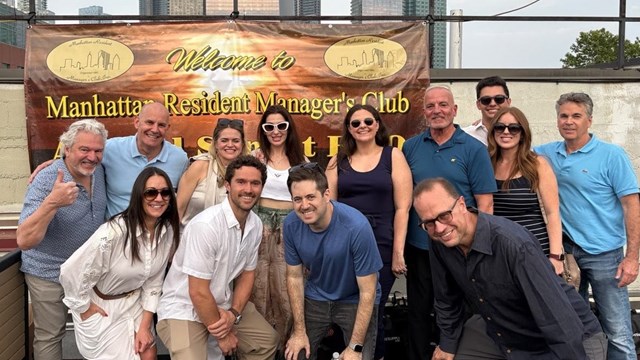Brooklyn's Community Board 6 - which covers Cobble Hill, Carroll Gardens, the Columbia Street District, Red Hook, Gowanus and Park Slope - may be one of the most diverse community boards in the city.
Its images range from fishermen and bicyclists enjoying the recently built
Louis Valentino Jr. Pier and Park in Red Hook to a working containerport serving
cargo ships; from sophisticated professionals drinking cappuccino on Park Slope's
Seventh Avenue to the urban youth in the Red Hook housing projects; from the
elaborate Christmas lights in the old Italian brownstone section of Carroll
Gardens to young activists hoping to clean up the Gowanus Canal; from Middle
Eastern bakeries selling baklava to swinging jazz bands at the Brooklyn Conservatory
of Music.
At least into the 1960s, the areas within Community Board 6 were all known
as South Brooklyn - and some old-timers still use the term. Why "South Brooklyn"
when there are other parts of Brooklyn - such as Flatbush and Coney Island - that
are actually much further south? For most of the 19th century, Flatbush, Gravesend
and so on were separate towns, and "South Brooklyn" meant the southern part
of what was then the city of Brooklyn.
Basically speaking, Brooklyn Community Board 6's boundaries are the East River,
Upper New York Bay, the Gowanus Canal, 15th Street, Prospect Park West, Flatbush
Avenue, Pacific Street, Fourth Avenue, Warren Street, Court Street and Atlantic
Avenue.
According to the statistical profile contained on the board's website (www.brooklyncb6.org),
the area was home to some 104,054 people as of the 2000 census. Of them, 54.5
percent are white, 23.4 percent, Hispanic and 15.9 percent, African-American.
The largest population groups fall into 25 to 44 and 45 to 64 age brackets.
Seventy-two percent of the households are renters; 27.4 percent, owners. Median
household income levels vary wildly by census tract, from $10,372 all the way
up to $112,414.
Among Brooklyn Board 6's best-known institutions are the New York Methodist
and Long Island College Hospitals, John Jay High School, the 14th Regiment Armory,
Carroll Park, the Park Slope Food Co-op, the Red Hook Community Court, and a
number of historic churches and art galleries. Prospect Park, although not within
the board's official boundaries, serves as the "back yard" for thousands of
its residents.
Decline and Rebirth At one time - throughout the 1950s and "˜60s - the areas within Brooklyn's CB6
seemed to be seriously going downhill. Containerization put the old Red Hook
piers and many nearby warehouses and businesses out of commission, which in
turn affected neighboring areas like Carroll Gardens and Park Slope, where many
residents worked on the waterfront.
In addition, the building of the Brooklyn-Queens Expressway (BQE) in the 1950s
decimated the neighborhood. The construction of the transportation artery cut
Red Hook's residents off from transportation and jobs, deepening the area's
poverty. But in the late 1960s and "˜70s, young professionals began buying old
brownstones and rehabilitating them, starting in Park Slope and spreading to
nearby areas.
Park Slope is known not only for its brownstones but as the city's recycling
capital. It has had voluntary recycling programs since the 1970s, an intensive
recycling pilot program, and an annual voluntary Christmas tree recycling program
that has become citywide. In general, the area has been a hospitable environment
for liberal causes.
As far as residential development is concerned, the most significant recent
action is probably last year's rezoning of formerly run-down Fourth Avenue,
on the edge of the Slope, to permit new apartment houses up to 12 stories high.
We recently talked to Craig Hammerman, the board's longtime district manager,
and Jerry Armer, the board's current chairman and a veteran civic activist.
What are some of the top housing issues in your board's area?
Armer: "How to match the need for housing with the desire to preserve
the neighborhoods' character and identity, especially the brownstone areas."
How wealthy a neighborhood is Park Slope?
Armer: "I moved to this area in '72, and even then, real estate values
in the Slope were going up. They've been going up for 30 years. Sometimes they
increase, then reach a plateau for awhile, then they increase some more. But
at one time, the area was in decline. In the early "˜60s, you could pick up a
brownstone in the Slope for a very good price."
Hammerman: "In the "˜60s, there was a lot of civil unrest in the Slope.
I've heard of situations on Fifth Avenue where there were snipers on the roof
and helicopters overhead. But those people who stuck out during the hard times
are now enjoying the fruits. I would say that today, the wealthiest areas in
Brooklyn are Park Slope, Brooklyn Heights [just north of the district] and Cobble
Hill."
What about apartment houses in the Slope?Armer: "You have a lot of small buildings of eight to 10 families around
Seventh and Sixth Avenues and a lot of brownstones, but no really large concentrations
of high-density buildings with the exception of Prospect Park West.
"As far as Fourth Avenue is concerned, there is a lot of building going on
there - now they can build up to 12 stories as of right on that street, without
the board's approval."
What is Cobble Hill like?Armer: "It's a very nice, quiet, family brownstone community, a nice
place to bring up kids. It's relatively upscale and stable."
What about Carroll Gardens? Is the old Italian community that was the inspiration
for the movie "Moonstruck" still there?Armer: "You still have a tightly-knit Italian community - there's a strong
Italian presence. It's about 50-50 between the Italian-Americans and the young
professionals."
Hammerman: "Historically, you have three very important, very large
Catholic parishes there - Sacred Heart-St. Stephen, St. Mary Star of the Sea,
and St. Agnes - that contribute a lot to the character of the area."
Tell us about the Columbia Street District.
Hammerman: "It's from Columbia Street west to the water's edge. Changes
are happening really fast - Pier 12 may someday be the site of the city's newest
cruise terminal. Today, the waterfront is taken up by the Red Hook Containerport."
I understand you recently made an effort to remove the live poultry markets
from the area.
Hammerman: "One of them found a new home in Sunset Park, with the assistance
of the Department of Small Business. The department is looking for a location
for another one, and a third had a fire. The area is a mixed-use community,
and when the city zoned the area, sometimes they drew the lines between one
type of use and another in the middle of a block. But the live poultry markets
were in conflict with residential use."
We've heard a lot about the rebirth of the Gowanus Canal since the reactivation
of the flushing tunnel and pumping mechanism a few years ago, and that fish
are again being seen in the canal. You even have a group of people who canoe
down the canal, the Gowanus Dredgers. What about the canal?
Armer: "The flushing mechanism, which is supposed to bring fresh water
into the canal, is now operating at about 40 percent of capacity. The canal
is cleaner, but not clean. One of the reasons groups like the Dredgers exist
is to call attention to the problems of the canal. The canal is still in the
ICU."
Isn't one of the bridges over the canal a very historic bridge?
Hammerman: "That's the Carroll Street Bridge, built in 1888. It's one
of the few remaining retractable bridges in the United States - it slides back
on railroad tracks (to let barges pass).
"The canal was originally a creek until it was enlarged by the city. At that
time, waterways were the way to move goods. Its peak came during and after the
Civil War. At one time, most of the grain that was shipped from this country
to Europe went through the Gowanus."
Do the public housing projects in Gowanus, the Gowanus Houses and Wyckoff
Gardens, present a challenge?
Hammerman: "Unemployment in the Gowanus projects is not as high as
in the Red Hook projects - there's a great relationship between the Boerum Hill
Association and the Gowanus Houses, and many members of the Boerum Hill group
play a mentoring role to residents of the project."Is Red Hook unusual because it is undergoing both residential and commercial
development?
Hammerman: "Red Hook has always been a mixed-use community. You have
commercial use, light industry. Now, there's a plan to build 61 units of houses.
You also have the plans to build the IKEA store there, you have the Pier 41
commercial development, and you have an artistic community with bars and restaurants
like Red Hook Blue and Lillie's. Armer: You also have the Liberty Tap Room, the Hope & Anchor Diner,
and `360.' All of this started within the past five years."
Any comment on the rehabilitation of old warehouses, like Pier 41 and the
Beard Street Warehouse, into new commercial complexes?Armer: "The Port Authority held those properties for years, and let
them fall into disrepair. The current owner [Greg O'Connell] had the vision
to buy them and rehabilitate them."
Getting back to Park Slope, how important is Prospect Park to that neighborhood?Hammerman: "The area near Prospect Park has always been known as the
"Gold Coast" and it's been a desirable area because of the park."
Armer: "But there's also been a vast improvement in the park because
of the type of people who live nearby."Are there many famous people living in Board 6's area?
Armer: "You have Borough President [Marty] Markowitz, and people like
actors Steve Buscemi and John Turturro. They like the fact that they can walk
down the street and people say hello to them like they're just regular people."Hammerman: "The most famous person who lived in this area was probably
Jennie Jerome, [Winston Churchill's mother]."
What are the main concerns of the board and the people who live in the
area?Hammerman: "If I had to pick and choose, I'd say land use, transportation
and economic development."
What do all the areas in your community board have in common?Hammerman: "They're all in different phases of development, they're
all being developed, and they're all in the process of flux. They're all `hot
properties.'"
Raanan Geberer is a freelance writer living in New York City.






Leave a Comment